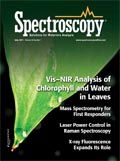Article
Spectroscopy
Spectroscopy
Two New Chemical Elements Recognized
Chemistry's periodic table has two new man-made elements. Atomic numbers 114 and 116, for now unnamed elements, have been recognized by the International Union of Pure and Applied Chemistry (IUPAC), which credited a Russia-United States collaboration with their discovery.
Chemistry’s periodic table has two new man-made elements. Atomic numbers 114 and 116, for now unnamed elements, have been recognized by the International Union of Pure and Applied Chemistry (IUPAC), which credited a Russia–United States collaboration with their discovery.
IUPAC has invited the collaborating scientists, from the Joint Institute for Nuclear Research in Dubna, Russia, and Lawrence Livermore National Laboratory in California, to propose names for the new elements. For now, elements 114 and 116 retain their provisional number-based names, ununquadium and ununhexium, respectively.
Both the newly vetted elements have higher atomic numbers than any element yet recognized by IUPAC. All elements with atomic numbers above 92 decay relatively quickly and are mostly man-made, although elements 93 and 94 (neptunium and plutonium) do exist naturally in trace quantities.
Scientists have been creating new elements since 1940, when neptunium and plutonium were first forged at the University of California, Berkeley.

Newsletter
Get essential updates on the latest spectroscopy technologies, regulatory standards, and best practices—subscribe today to Spectroscopy.

